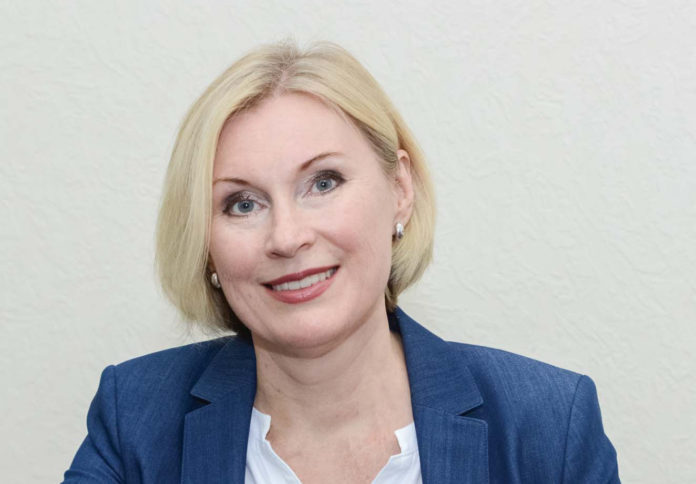Emma Turos, Executive Director of the Canadian-Ukrainian Chamber of Commerce for Ukraine, Project Coordinator for CUTIS (Canadian-Ukrainian Trade and Investment Support Project) informs FD and its readers about achievements and new perspectives of the economical cooperation between Ukraine and Canada.
The history of the Canadian-Ukrainian Chamber of Commerce began in 1992, when a group of Canadian businessmen of Ukrainian descent decided to help Ukraine with the reforming of the economy. Today the Chamber has more than 250 members in both countries and has become the centre of bilateral economic relations between Ukraine and Canada.
Nowadays, together with the Canadian Embassy in Ukraine and Embassy of Ukraine in Canada, with the technical assistance projects, with the Ukrainian partners and with everyone who collaborates with Canada, we celebrate the anniversary of the Free Trade Agreement between our two countries (the Agreement came into force on the 1st of August 2017).
Free Trade Zone between the two countries means not only an opportunity but also a challenge for Ukrainian enterprises. Our countries have developed in rather different ways, although they have a lot in common.
The CUTIS project, cosponsored by the Conference Board of Canada and the Canadian-Ukrainian Chamber of Commerce, aims to help in implementing of the Agreement and process exports from Ukraine to Canada in selected 5 priority areas (clothing, footwear, sweets, furniture and IT services). While selecting companies, the goal of the project is to take into account the assistance for the small and medium enterprises and especially for those ones that are run by women.
With the entry into force of the Free Trade Association, the trade turnover between our countries has been gradually increasing, but this is far from the amount of trade we would like to see.
In the first four months of this year, exports from Ukraine to Canada (according to Canadian statistics) increased by 29.8% compared to the same period last year. It should be noted that in 2017 we only returned to the “pre-war index” in 2013. The peak of exports from Ukraine to Canada fell to 2005 (more than $ 296 million) and 2008 (about $ 197.5 million dollars).
The largest exports of metallurgical products, machine building products, timber and machinery. The assortment has been gradually expanding, and this is promoted by our Chamber, by technical assistance projects, by the work of our colleagues from the Government and our business that has been paying more attention to the Canadian market.
 How do we help our businesses to increase the export? Enterprises are selected according to certain criteria, including certification, export experience, quality of products and demand for it, the company’s readiness to work in the Western markets, etc. Selected companies are trained and consulted by experts from Canada, and then they present their products for the potential partners. As for the training, within the framework of the CUTIS project, by the end of the year, the consultants will be trained for working in most regions of Ukraine and for providing advice how to do business with Canada. Pilot training courses will be conducted for the general public at the end of 2018 – at the beginning of 2019. CAN EXPORT manual that has been published recently and that has been hosted on the CUTIS project site, is essentially a roadmap for those ones who are going to work at the Canadian market. The annexes to it (concerning the five priority sectors that had been mentioned above) are prepared.
How do we help our businesses to increase the export? Enterprises are selected according to certain criteria, including certification, export experience, quality of products and demand for it, the company’s readiness to work in the Western markets, etc. Selected companies are trained and consulted by experts from Canada, and then they present their products for the potential partners. As for the training, within the framework of the CUTIS project, by the end of the year, the consultants will be trained for working in most regions of Ukraine and for providing advice how to do business with Canada. Pilot training courses will be conducted for the general public at the end of 2018 – at the beginning of 2019. CAN EXPORT manual that has been published recently and that has been hosted on the CUTIS project site, is essentially a roadmap for those ones who are going to work at the Canadian market. The annexes to it (concerning the five priority sectors that had been mentioned above) are prepared.
Canada is a cosmopolitan state and one of the world’s leading leaders and authorities in equality:
in national, gender, different sexual orientation, and so on. Therefore, in each project, including technical assistance projects, there is a gender component. We mean that choosing the industry or enterprise to be supported, we will pay attention to whether there are women managers or owners, how many women work, and so on. The goal is to ensure equal access to resources. For example, among the companies selected by the CUTIS project, almost one-third has female owners or female executives.
Recently, Canada has announced a $ 30 million allocation to support the development of women’s entrepreneurship in Ukraine.
These projects will be technical assistance ones.
There are also many questions regarding the implementation of the Free Trade Agreement and these issues deal with the tariff s. I mean certification of products, observance of intellectual property rights, non-tariff barriers. The cooperation between different state institutions responsible for regulatory policy, standardization, product safety control is aimed at these issues. Also, one of the most important issues is the protection of the environment. If Ukraine wants to position itself as a producer of organic and safe products, then it should pass the inspection and receive only those certificates that are recognized in Canada.













